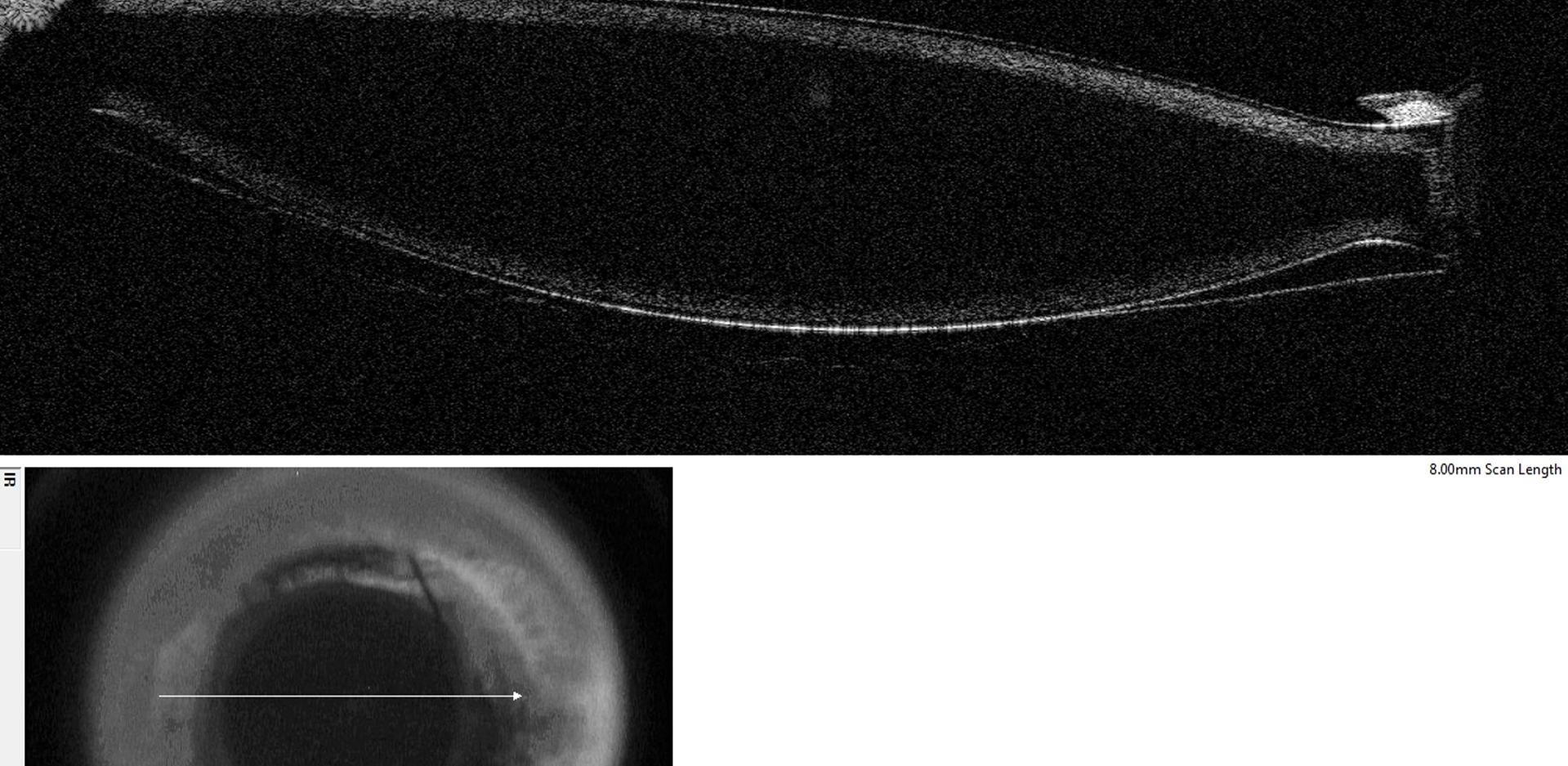The aim of the thesis is to present the case of a patient in whom bilateral calcification of the hydrophilic intraocular lens (IOL) Lentis M+ LS-313 MF30 (Oculentis) has developed. Due to the negative effect on visual functions, explantation and replacement of the artificial lens was necessary in both eyes.
Case Report: An overview of the available literature summarized the diagnostics, current examination methods and possibilities of the surgical solution of calcification of the bifocal hydrophilic lens Lentis M+ LS-313 MF30 (Oculentis). The specific solution is described in a case report of a patient in whom calcification of both lenses developed 6 years after implantation of the IOL. In 2015, the patient underwent uncomplicated cataract surgery of both eyes with the implantation of an artificial intraocular lens into the capsule. In September 2021, an 82-year-old man was examined at our outpatient clinic for deterioration of visual acuity and changes in the material of the artificial IOL which were perceptible during a clinical examination, on the recommendation of a local ophthalmologist. Blurred vision predominated. A diagnosis of intraocular lens opacification was confirmed and documented using a Scheimpflug camera (OCULUS Pentacam HR) and anterior OCT (Avanti RTVue XR Optovue,). The patient was indicated for explantation and replacement of the opacified intraocular lens in the left and subsequently in the right eye – the same type of IOL was used for reimplantation with good functional results.
Conclusion: Since 2010, multifocal lens implantation has been on an upward trend worldwide. This type of MF IOL has also been used in thousands of implantations. A number of other explantations can be expected in the coming years. The optimal solution is the correct replacement of the calcified IOL with the same construction made of safer hydrophobic material.

